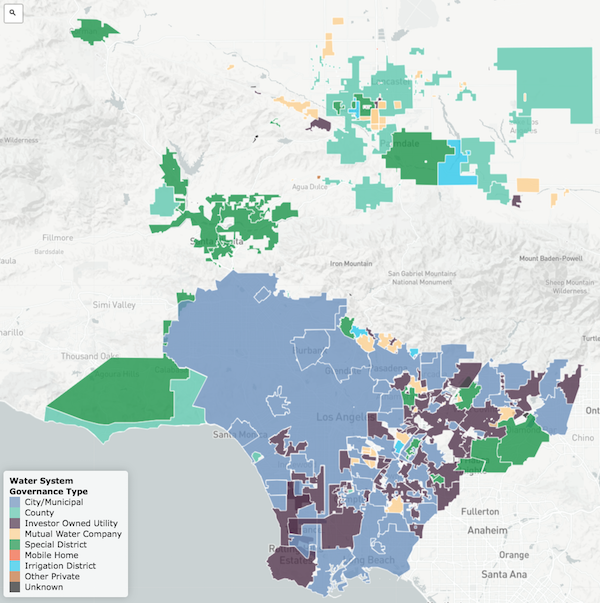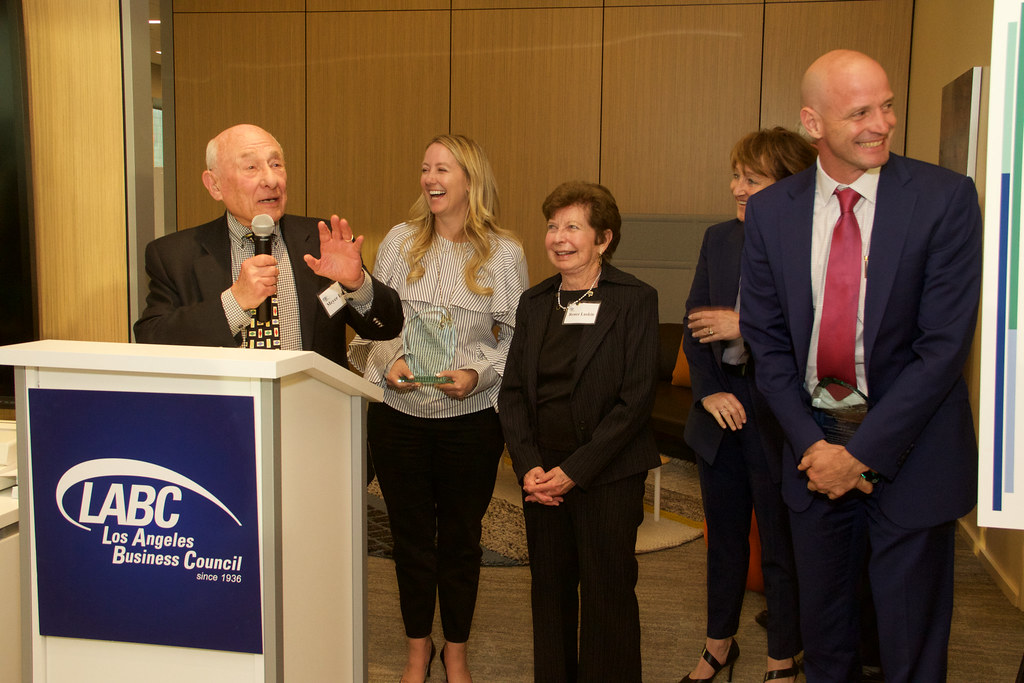By Colleen Callahan
A new study by the UCLA Luskin Center for Innovation (LCI) found significant disparities in the quality, affordability and accessibility of water across Los Angeles County. However, the number of health-related water-quality violations in the county is quite low compared to other parts of Southern California, the researchers concluded.
The study evaluated the county’s more than 200 water systems and compared current data to findings published in LCI’s 2015 water atlas. The progress report flags interventions that may be necessary to continue improvements and address persistent problems. Los Angeles County is working with state and federal agencies to respond to several systems that incurred repeated water-quality violations.
A 2012 state law (Assembly Bill 685) establishes that all Californians have the right to safe, affordable and accessible water – referred to as the “human right to water.” Yet this right is not a reality for everyone in L.A. County, due primarily to differences in community water systems that directly provide water to residents and businesses.
“The goal is to give systems operators, regulators and residents the most current and comprehensive picture of water system performance in order to identify what systems are in need of interventions,” said Gregory Pierce, associate director of LCI and lead author on the report. “Despite momentum, urgent attention is needed to address water system problems.” Pierce also teaches urban planning at UCLA Luskin.
System performance overview
While most systems in L.A. County provide sufficient levels of safe and affordable water to their customers, many small systems – particularly mobile home parks, RV parks and mutual water systems – are most at risk for having technical, managerial and financial challenges that lead to poor outcomes related to quality, affordability and accessibility.
Governance trends
There are fewer active community water systems today than five years ago. The reduction of apparently 10% of systems in L.A. County suggests that some have consolidated, which reflects progress in reducing water system sprawl that results in many small, low-capacity systems at higher risk of underperformance.
Quality trends
Compared to other counties in Southern California, the number of health-related water-quality violations in L.A. County is low, particularly on a per capita basis.
Affordability trends
The report found great disparity in how much residents pay for water across systems. For an amount of water sufficient for a family of four, rates today range from $26 to $134 per month.
Accessibility trends
Few systems report producing less than the standard set in the “human right to water” legislation — 55 gallons per person per day. However, systems in Santa Clarita and Antelope Valley were most likely to face declining groundwater levels. Increasing population, changing precipitation patterns under climate change and other factors pose challenges.
“In addition to the state’s efforts, more regional, local and system-level work will be necessary to ensure the human right to water for all,” said Kyra Gmoser-Daskalakis, a researcher at LCI and co-author of the report.


